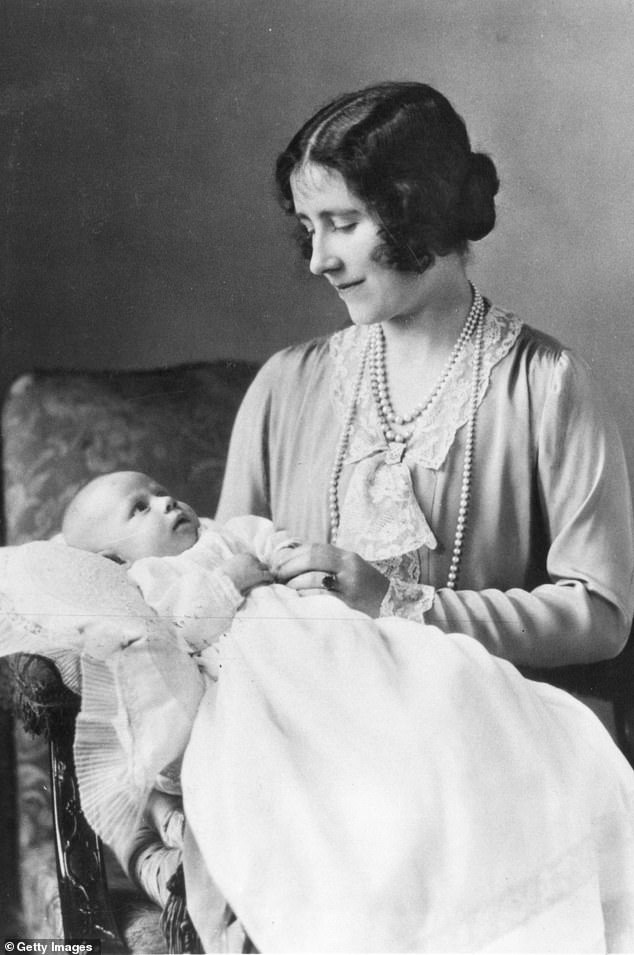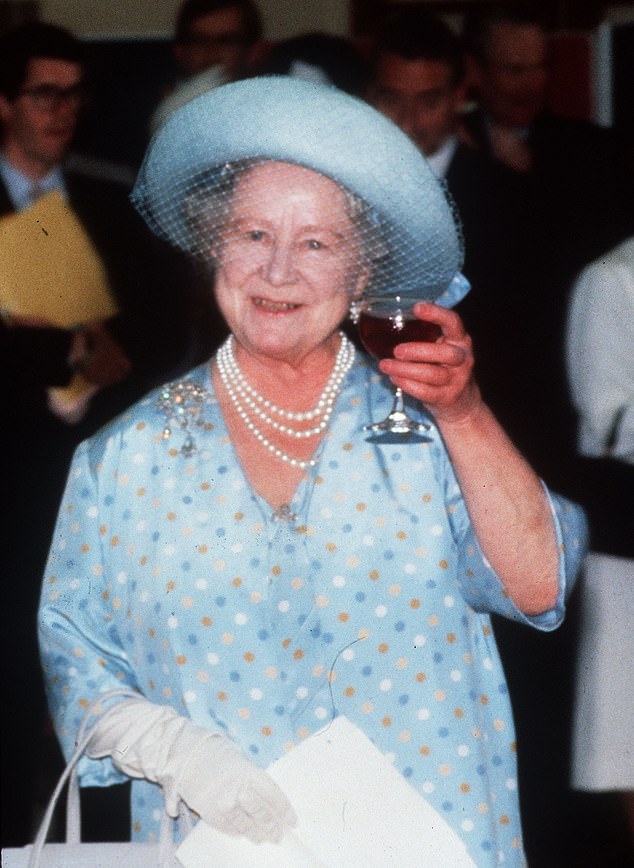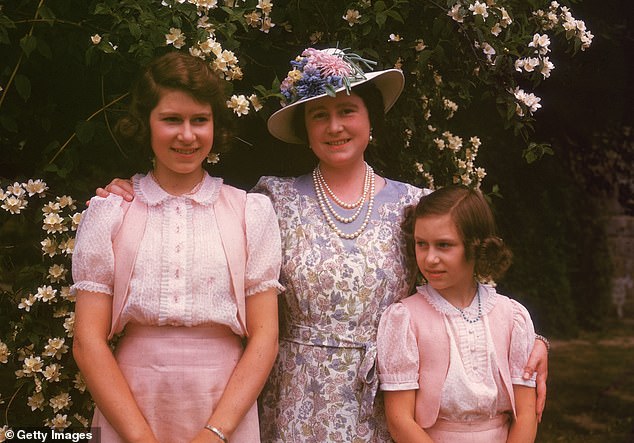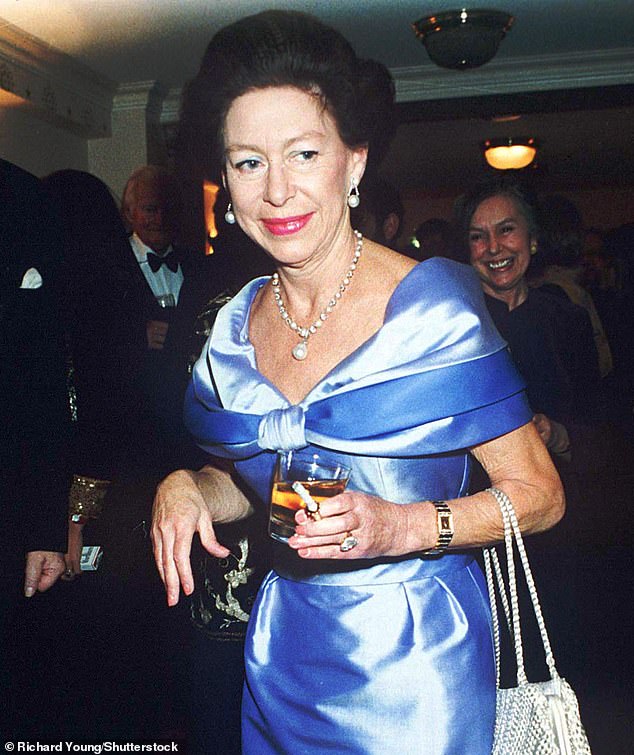This was never going to be the ideal week for the King to read that his beloved grandmother’s drinking in pregnancy might have been to blame for the troubled life of Princess Margaret.
And it is certainly not the jolliest way to mark the 125th anniversary of the Queen Mother’s birth in four days – a date Charles will mark privately.
The extraordinary assertion that the King’s aunt suffered from an ‘invisible disability’ brought on by foetal alcohol disorder is at the heart of an unofficial new biography of the Princess, who died 23 years ago.
Whether the claim by Pulitzer Prize-nominated biographer Meryle Secrest – made with a bewildering array of expert testimony – is true is another matter. Actual evidence to back up this audacious claim appears flimsy.
A 1925 letter to the future King George VI from his wife – then pregnant with their first daughter Princess Elizabeth – is cited. In it, she writes: ‘The sight of wine simply turns me up! Isn’t it extraordinary! It will be a tragedy if I never recover my drinking powers.’
Four years later, when pregnant with Margaret, the Queen Mother was not so handicapped. ‘In any case no doctor is likely to have her warned her… not to drink,’ the 95-year-old Secrest writes. ‘Prevailing medical opinion had it that the placenta protected the growing baby from alcohol’s effects.’
The author notes darkly that the Queen Mother’s Scottish family, the aristocratic Bowes-Lyon clan, were ‘hard drinkers’ with an ability to ‘hold their liquor’. This was said to show ‘strength of character – and not to keep up with everyone was proof of lack of inner worth’.
Kenneth Clark – the distinguished art historian and father of maverick Tory MP Alan Clark – is roped in, describing how, when he became friends with the royal couple in the 1930s, ‘the little Queen [Queen Mother] started drinking at 11.30 in the morning. [Clark] consoled himself by adding that she only drank Dubonnet before lunch.’

Meryle Secrest alleges the Queen Mother, pictured with a newborn Margaret in 1930, is unlikely to have been warned ‘not to drink’ during pregnancy
Another account of her drinking from later in life comes from Major Colin Burgess, a former equerry, who says that a ‘well-spiked Dubonnet would be followed every day by wine for lunch with perhaps a glass of port afterwards’ until the 6pm ‘magic hour’ when martinis and pink champagne would be prepared.
It is the evidence of her mother’s heavy drinking that illuminates the author’s claim that these pre-ordained all Margaret’s problems, from her stunted growth and struggles learning to write, to her later emotional crises.
The US-based writer says her book is less a biography and more an investigation into the life of the Princess.
All the same, her conclusions are unlikely to go down well with Margaret’s children – her son David, the 2nd Earl of Snowdon, and her artist daughter Lady Sarah Chatto – or her surviving friends. ‘It is truly bizarre to suggest that everything that happened to the Princess can be put down to how much the Queen Mother drank while pregnant. And not just bizarre but ridiculous,’ says a former friend of Margaret. ‘Her life was not one long tragedy: she was an intelligent woman with a wide circle of interests and friends and was a mother and grandmother.’
In her book, Princess Margaret And The Curse, Secrest says she has re-examined the royal’s personality in light of greater knowledge about a baby’s exposure to alcohol in the womb. Foetal alcohol disorder can leave a child with distinctive facial features, and cause difficulties with learning, impulse control and managing emotions. This, she maintains, was the ‘invisible disability’ from which the Princess suffered.
While Margaret lacked the syndrome’s tell-tale smooth lip philtrum and small eyes, she displayed other characteristics. These, she suggests, included ‘lacking the fine muscle control needed to hold a pen’, her short stature and painful migraines.

Major Colin Burgess, a former equerry, who says that a ‘well-spiked Dubonnet would be followed every day by wine for lunch with perhaps a glass of port afterwards’ until the 6pm ‘magic hour’ when martinis and pink champagne would be prepared

But, says Richard Kay, the real story of Princess Margaret is much less complex. She was spoiled as a child and fawned over as a young adult
Friends are bemused by some of these assertions. As one points out: ‘The Princess was not physically tiny – neither the Queen nor the Queen Mother were exactly tall – and she had very elegant handwriting.’
In the absence of any physical disabilities, Secrest – who notes that children with the condition may typically misbehave – looks for other compelling evidence. ‘That crawling around under the dinner table, tickling people’s feet – could that be the behaviour of a little girl who was out of control?’ she asks.
The author adds that Margaret’s family and her nursemaids found her to be ‘naughty’ as well as ‘mischievous and provocative’, on one occasion sinking a boat during a rowing lesson with a Girl Guide instructor by deliberately removing the bilge plug from the hull. ‘No harm was done but it meant the teacher had to wade ashore, skirts held high and she was quite cross about it,’ Secrest writes.
Many will wonder if, rather than proof of a syndrome that was not well understood until the 1970s, Margaret was actually displaying the kind of carefree behaviour seen in many a child’s home. Fast-forward 50 years and similar stories were emerging of another second royal child: Prince Harry.
As far as I know there has been no suggestion that Harry suffered foetal alcohol disorder. But then, how could he? His mother Princess Diana scarcely drank.
To reinforce her thesis, Secrest says of Margaret: ‘She was a natural athlete, common with foetal alcohol syndrome children.’ (This is true. The condition is surprisingly common: according to Bristol University research, 17 per cent of the UK population may be affected to some degree.) Then, too, there was Margaret’s ‘impulsiveness’ and habit as a child to ‘blurt out the truth’.
All in all, it is a veritable cornucopia of claims – yet there is no evidence that the Princess suffered from an alcohol-related neurodevelopmental disorder.
Rather, the book compares Margaret’s life to those who have suffered from the condition. Sufferers, in fact, whose lives bear little resemblance to that of the privileged Princess who grew up cosseted in luxury.

For Princess Margaret, Richard Kay writes, life was largely one of amusement and pleasure

There is no doubt that, as her marriage unravelled, Margaret was inclined to drink – she was hardly the first scorned wife to turn to the bottle, says Richard Kay
The real story of Princess Margaret is much less complex. Spoiled as a child and fawned over as a young adult, her lack of formal education meant she was ill-equipped to meet the changes in her status. From 1936 to 1948 she was the heir in line to the throne, her sister’s understudy.
The birth first of Prince Charles, then Princess Anne, saw her inexorable slide down the line of succession, which only accelerated when her nephews and niece had their own children.
Can the break-up of her marriage to the serially unfaithful society photographer Lord Snowdon and subsequent spells of ill health all truly be laid at the door of her mother’s habits? Why, then, did Queen Elizabeth not suffer as her sister did? After all, even if the Queen Mother did not drink during her first pregnancy, the young Princess – just like her sister – was brought up in a culture where alcohol oiled every social and official occasion.
The truth surely lies in their respective positions as young women. For the Queen it was a life of rigorous duty; for Princess Margaret it was largely one of amusement and pleasure.
There is no doubt that, as her marriage unravelled, Margaret was inclined to drink – she was hardly the first scorned wife to turn to the bottle. Loneliness compounded her unhappiness.
And consider this. For all her years of tippling, the Queen Mother lived to 101. Her daughter, who pre-deceased her by six weeks, was just 71 when she died.











